ПМИ-РР-Л-2.pptx
- Количество слайдов: 9
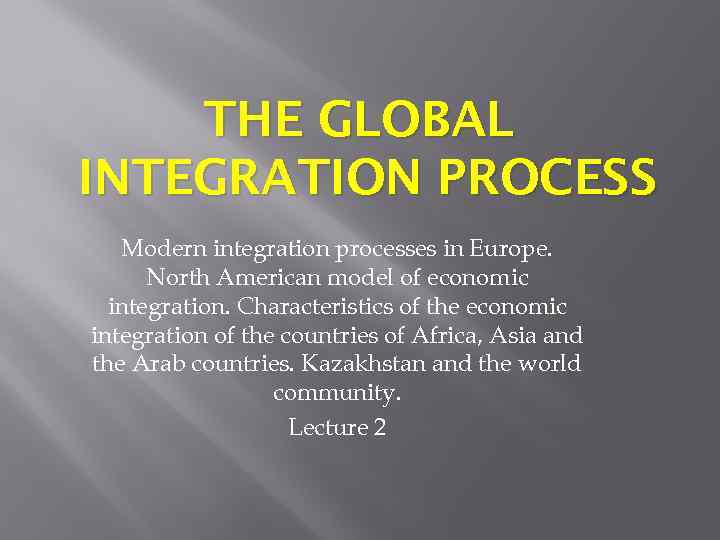
THE GLOBAL INTEGRATION PROCESS Modern integration processes in Europe. North American model of economic integration. Characteristics of the economic integration of the countries of Africa, Asia and the Arab countries. Kazakhstan and the world community. Lecture 2
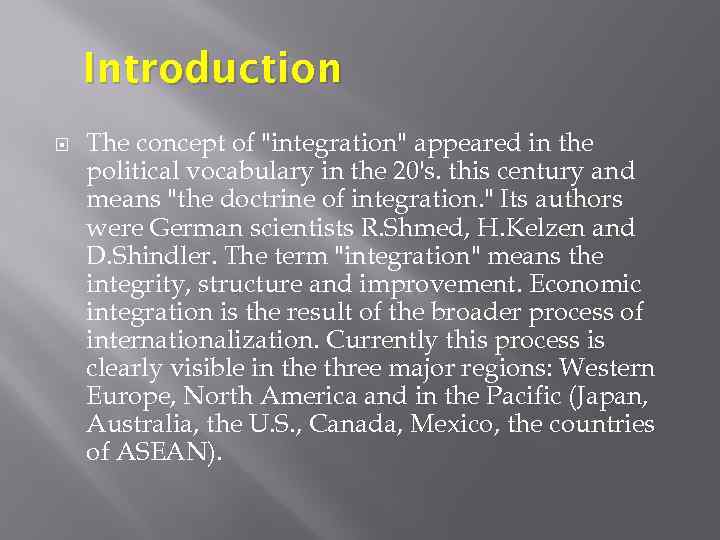
Introduction The concept of "integration" appeared in the political vocabulary in the 20's. this century and means "the doctrine of integration. " Its authors were German scientists R. Shmed, H. Kelzen and D. Shindler. The term "integration" means the integrity, structure and improvement. Economic integration is the result of the broader process of internationalization. Currently this process is clearly visible in the three major regions: Western Europe, North America and in the Pacific (Japan, Australia, the U. S. , Canada, Mexico, the countries of ASEAN).
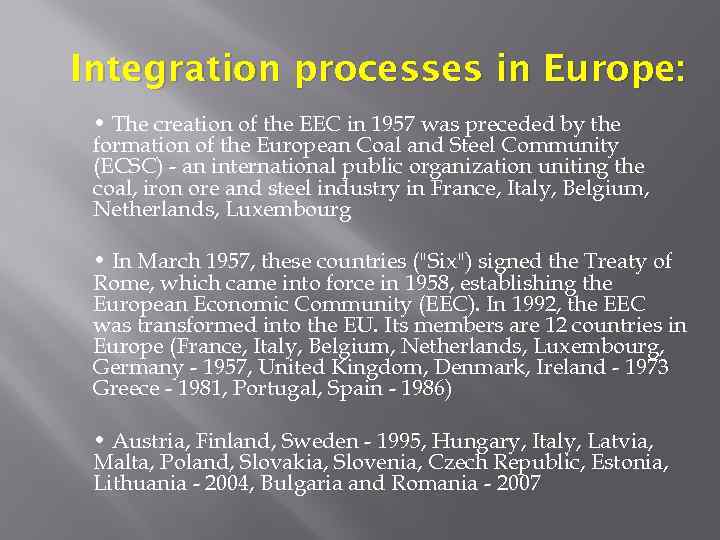
Integration processes in Europe: • The creation of the EEC in 1957 was preceded by the formation of the European Coal and Steel Community (ECSC) - an international public organization uniting the coal, iron ore and steel industry in France, Italy, Belgium, Netherlands, Luxembourg • In March 1957, these countries ("Six") signed the Treaty of Rome, which came into force in 1958, establishing the European Economic Community (EEC). In 1992, the EEC was transformed into the EU. Its members are 12 countries in Europe (France, Italy, Belgium, Netherlands, Luxembourg, Germany - 1957, United Kingdom, Denmark, Ireland - 1973 Greece - 1981, Portugal, Spain - 1986) • Austria, Finland, Sweden - 1995, Hungary, Italy, Latvia, Malta, Poland, Slovakia, Slovenia, Czech Republic, Estonia, Lithuania - 2004, Bulgaria and Romania - 2007
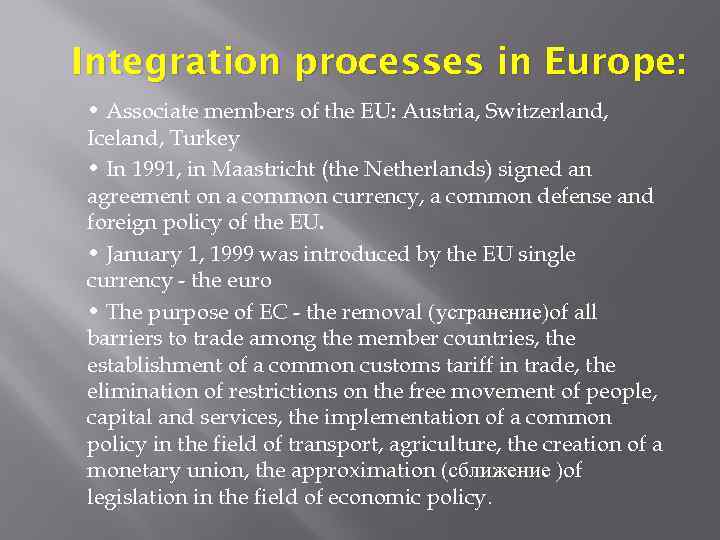
Integration processes in Europe: • Associate members of the EU: Austria, Switzerland, Iceland, Turkey • In 1991, in Maastricht (the Netherlands) signed an agreement on a common currency, a common defense and foreign policy of the EU. • January 1, 1999 was introduced by the EU single currency - the euro • The purpose of EC - the removal (устранение)of all barriers to trade among the member countries, the establishment of a common customs tariff in trade, the elimination of restrictions on the free movement of people, capital and services, the implementation of a common policy in the field of transport, agriculture, the creation of a monetary union, the approximation (сближение )of legislation in the field of economic policy.
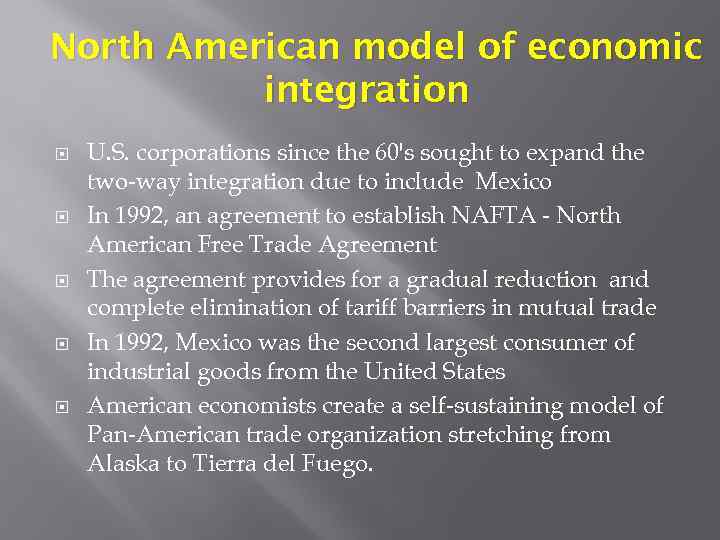
North American model of economic integration U. S. corporations since the 60's sought to expand the two-way integration due to include Mexico In 1992, an agreement to establish NAFTA - North American Free Trade Agreement The agreement provides for a gradual reduction and complete elimination of tariff barriers in mutual trade In 1992, Mexico was the second largest consumer of industrial goods from the United States American economists create a self-sustaining model of Pan-American trade organization stretching from Alaska to Tierra del Fuego.
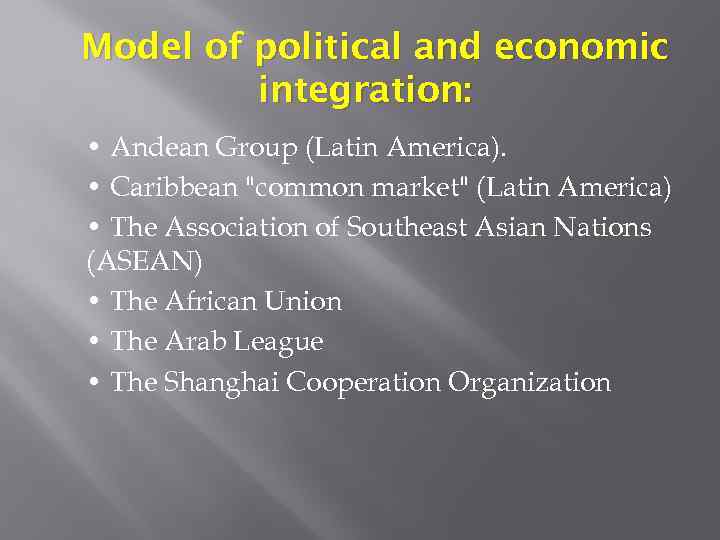
Model of political and economic integration: • Andean Group (Latin America). • Caribbean "common market" (Latin America) • The Association of Southeast Asian Nations (ASEAN) • The African Union • The Arab League • The Shanghai Cooperation Organization
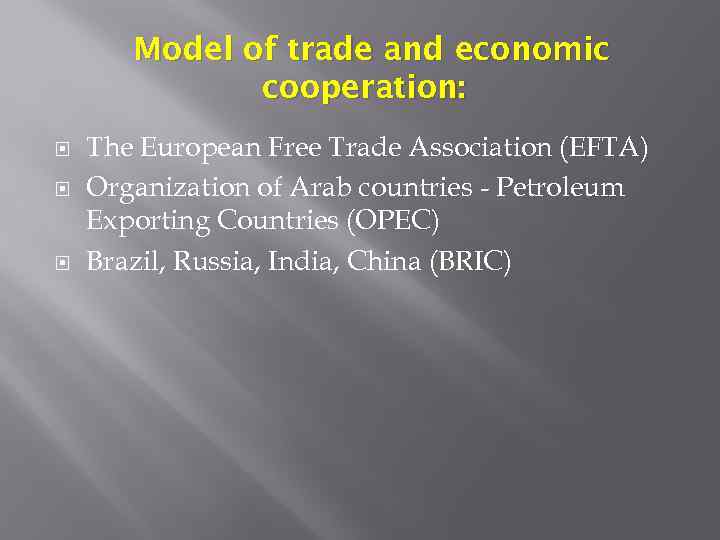
Model of trade and economic cooperation: The European Free Trade Association (EFTA) Organization of Arab countries - Petroleum Exporting Countries (OPEC) Brazil, Russia, India, China (BRIC)
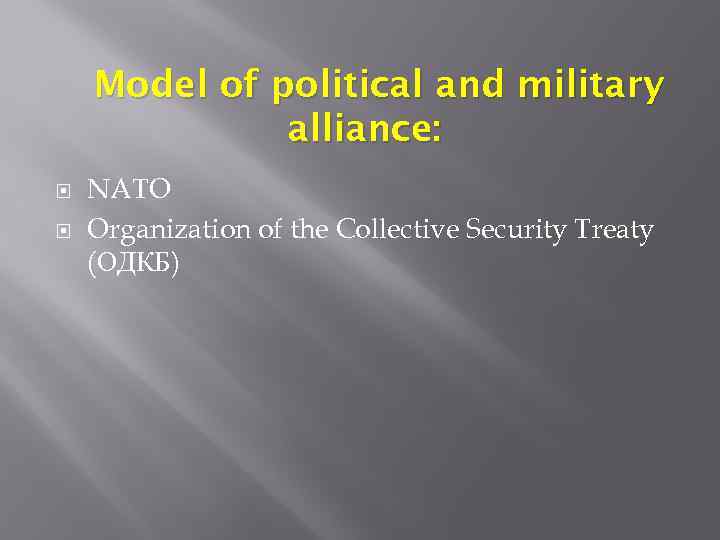
Model of political and military alliance: NATO Organization of the Collective Security Treaty (ОДКБ)
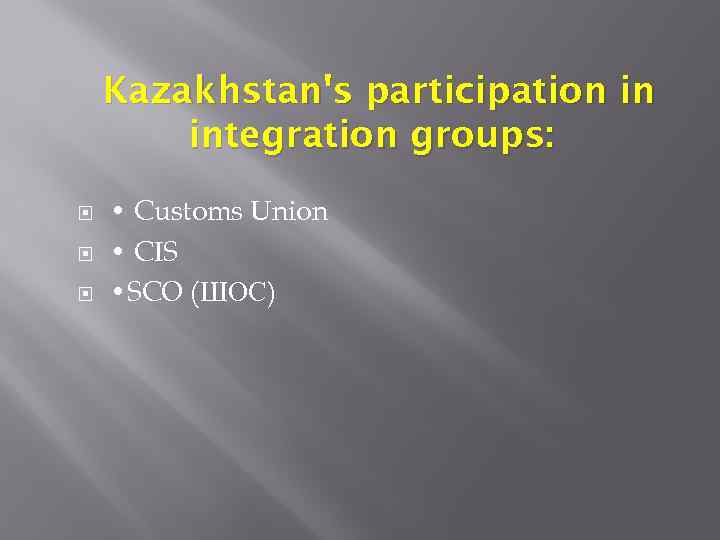
Kazakhstan's participation in integration groups: • Customs Union • CIS • SCO (ШОС)
ПМИ-РР-Л-2.pptx